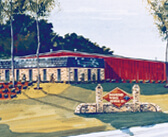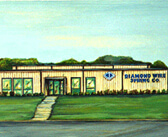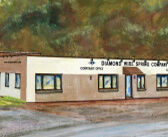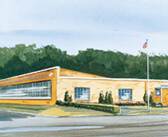
Grinding for Compression Springs
A common requirement for compression springs is to grind the ends flat.
In the majority of cases, this grinding flat of the ends is done on an automatic grinding machine. These machines consist of a round plate into which bushing are fitted. The bushing inside diameter is of a size so that the springs will fit leaving a small amount of spring protruding top and bottom. The plate then turns slowly round so that the bushing plus springs pass in between either one pair of grinding wheels or as in the illustrated photograph, two pairs of grinding wheels depending on what type of machine is used. The grinding wheels grind the ends of the springs flat and square and then they drop into a waiting box for inspection when they are thoroughly tested to make sure they comply both dimensionally and in their load requirements.
If you're looking at the end of the spring, the ground surface should look like the graphic, once ground.
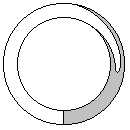
The other thing to check is how square your ground ends are. You can do this by setting your spring down next to a carpenter's square, a machinist's square, a book, or anything else that stands up straight. Then, holding the bottom end of the spring next to your square, turn the spring around and watch the gap between the square and the top end.
If your spring is perfectly square, there will be no gap as you turn the spring around. A small gap is OK, since the ends of the spring will flatten out under load (Commercial squareness in spring shops is ±3 degrees). Generally, 3/4 of the bearing surface is ground, and 1/2 of the wire thickness is ground off.


